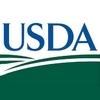Explore all the information on
Salmonella in poultry
Poultry can become infected with many different types of salmonella; about 10 percent of all Salmonella spp. have been detected in poultry. The most important are Salmonella Typhimurium and Salmonella Enteritidis. Other serotypes frequently occurring in poultry worldwide are, for example, Salmonella Hadar, Salmonella Livingstone, and Salmonella Senftenberg. In most cases, the birds are not sick and the production is not affected. The degree of illness depends on factors of both the bacteria and the host. The bacterium’s serotype and phage type is of significance but also the type of animal, age and general health status. S.Typhimurium and S. Enteritidis may induce clinical symptoms in poultry. It is mainly in very young chickens aged up to two weeks that salmonella can cause disease and death. The symptoms may vary and include weakness, loss of appetite and poor growth. The animals are crowded close to heat sources and sit with drooping wings and their eyes closed.
1. Introduction In recent years, a considerable attention to essential oils (EO) as nutraceuticals in livestock production has occurred, mainly as an alternative to antibiotic growth promoters (AGPs) worldwide. Essential oils are derived from various plants as secondary metabolites with well-documented antibacterial [1], antiviral [2], antifungal [3], antioxidant [4], digestive stimulants [5], and immunomodulatory properties [6]. Some EO are used in a combination with other...
Comments : 0
Recommendations: 1
A sneaky microorganism capable of creating nightmares to the poultry industry is here to stay but is it really taking over? It is amazing to see how many available options are in the market for Salmonella control. During the last IPPE Expo, I had an opportunity to chat with various nutritional and biological products suppliers and learn from them how an integrated control strategy is required for Salmonella control in poultry. Selecting the right products is only part of it; monitoring...
Comments : 3
Recommendations: 1
The new techniques developed for the diagnosis of Salmonellosis in poultry include a wide variety of systems and processes that have succeeded in accurately determining the species involved in Salmonella infections and differentiating between field strains and vaccine...
Comments : 0
Recommendations: 0
The presence of Salmonella in poultry is a very significant issue in livestock production. This pathogen not only has consequences for animal health, but also for Public Health, and even for the international trade of poultry products and...
Comments : 2
Recommendations: 0
Foodborne diseases & global scenario: Up to 30% of the inhabitants in developed countries may be affected by food-borne illness each year and the problems are likely to be even more serious in developing countries. The global occurrence of food-borne disease is difficult to evaluate, but in 2005 it was projected that 22 lakhs people, including 18 lakhs children, died from diarrheal diseases(WHO,2015). Microbiological hazards represent 93% of the incidents of food-borne...
Comments : 0
Recommendations: 0
Method details Salmonella spp. cause fowl typhoid and pullorum diseases in poultry and are responsible for nontyphoidal Salmonella infection in humans. Prevention of Salmonella infection in chicken flocks is an important step in reducing salmonellosis outbreaks in humans. Vaccination with live attenuated vaccine of certain strains such as e.g. S. Enteritidis, S. Typhimurium and S. Gallinarum has been commonly used in the field to prevent the disease, and proven to be useful to...
Comments : 0
Recommendations: 0


Effective Solutions to Manage Poultry Heat Stress for Better Health and Farm Productivity
Suggested link
Salmonellosis continues to be one of the most serious challenges in poultry farming. On the one hand, that which originates from strains causing poultry diseases and, above all, from those serotypes/serovars causing food-borne toxicosis (food...
Comments : 0
Recommendations: 0
...
Comments : 0
Recommendations: 0


Pullets to Layers – Ensuring a Smooth Transition in Cage-Free Systems
Suggested link
1. Introduction Salmonella spp. are major food-borne pathogens around the world. The Salmonella genus is composed by two species, S. bongori and S. enterica. Also, the latter is also composed of six subspecies: S. enterica (I), S. salamae (II), S. arizonae (IIIa), S. diarizonae (IIIb), S. houtenae (IV), and S. indica (VI) [1]. In the year 2015, S. enterica was responsible of 94,625 confirmed cases of salmonellosis and 126 deaths in the European Union (EU). Although in the last...
Comments : 0
Recommendations: 0
INTRODUCTION Salmonella is a foodborne pathogen of great concern, and often, Salmonella outbreaks are found to originate from poultry (CDC, 2018; CDC, 2019). Every year in the United States, Salmonella is responsible for causing 1.35 million infections, >25,000 hospitalizations, and >400 deaths, and the majority of these illnesses are attributed to food (CDC, 2020). Salmonella's major risk factor in poultry meat and table eggs is its presence in live birds (Hugas and...
Comments : 0
Recommendations: 0
Poultry Immunity The poultry immune system is in many ways the “standard” vertebrate immune system, which is what makes it such a good model for immune research, though there are several key differences when compared to other agricultural species. Indeed, much of our fundamental understanding of immunology has come from the study of poultry, specifically chickens. Discoveries including retroviruses, oncogenes, interferon, vaccine...
Comments : 1
Recommendations: 1
Using hypothesis-driven data mining, a UGA research team led by Xiangyu Deng of UGA’s Center for Food Safety analyzed over 30,000 genomes of Salmonella Enteritidis obtained from global sources and the international...
Comments : 0
Recommendations: 1
1. Introduction Salmonella is one of the leading causes of foodborne outbreaks in the United States, responsible for approximately 1 million cases each year [1]. Poultry and poultry products have been implicated as a major source of Salmonella infection in humans [2]. Due to public health concerns, the Food Safety and Inspection Service (FSIS) mandated that meat-processing plants implement Hazard Analysis Critical Control Point (HACCP) program and meet USDA...
Comments : 0
Recommendations: 1
The vaccination of laying hens with live vaccines against Salmonella Enteritidis applied in a 3-dose vaccination regimen during rearing has been one of the measures implemented that has reduced the prevalence of Salmonella in poultry and therefore also the risk of...
Comments : 0
Recommendations: 1
Despite successful Salmonella control measures implemented in food-animal production, salmonellosis remains one of the most frequently occurring food-borne zoonoses worldwide, with poultry and poultry products as the main transmission vector. In general, about...
Comments : 5
Recommendations: 1
1. Introduction A previous study reported nontyphoidal Salmonella spp., Clostridium perfringens, Campylobacter spp., and Escherichia coli as some of the most important foodborne bacterial pathogens in the U.S. [1]. Overall, health-related cost associated with the food borne illness from those pathogens was estimated to be around $51.0 and $77.7 billion based on a basic and enhanced model, respectively, as described earlier [1,2]. S. enterica serotype Enteritidis (SE) that...
Comments : 0
Recommendations: 0
Introduction A 42-year history of information on Salmonella enterica serotypes indicates it is essential to rapidly determine serotype and subtype of isolates from contaminated products to improve the safety of food (Liu et al., 2011; Fabre et al., 2012; CDC-NCEZID, 2013; Lettini et al., 2014). Recently, a sequence-based method called dkgB-linked intergenic sequence ribotyping (ISR) became available to producers who want to independently screen for serotypes of S. enterica...
Comments : 0
Recommendations: 0
INTRODUCTION The Centers for Disease Control and Prevention has estimated there are approximately 48 million cases of foodborne illness in the United States annually (Elaine et al., 2011a, 2011b). Salmonella and Campylobacter are the most frequently reported bacterial causes of poultry-related foodborne illness (Heyndrickx et al., 2002; Mead, 2002) because of their association with the gastrointestinal (GI) tract of chickens...
Comments : 0
Recommendations: 0
The concept of food safety has become increasingly more evident in food production, mainly in relation to the export of products of animal origin, and it is a huge challenge to for the industries to ensure food safety. The demand for healthier and more natural additives in food has increased in Brazil and the world, resulting in investment in technology and industry adhesion. The technology used in the manufacture of the products is fundamental and integrates techniques for the...
Comments : 13
Recommendations: 3
The two most common zoonotic diseases around the world are campylobacteriosis and salmonellosis, in that order. Salmonella is a bacteria that can cause serious gastrointestinal disease in human beings. As it is a zoonotic disease, it can be transmitted directly or indirectly between animals and human beings through...
Comments : 0
Recommendations: 2



.jpg&w=3840&q=75)



























